Tanaka Kazuyuki Hamono
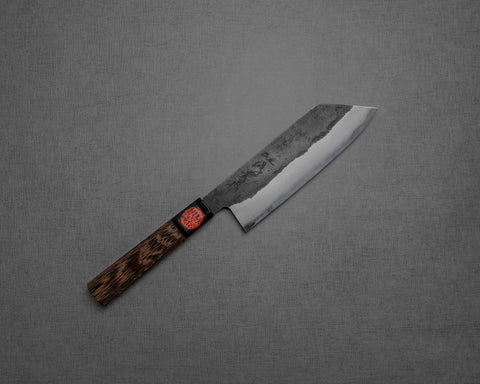
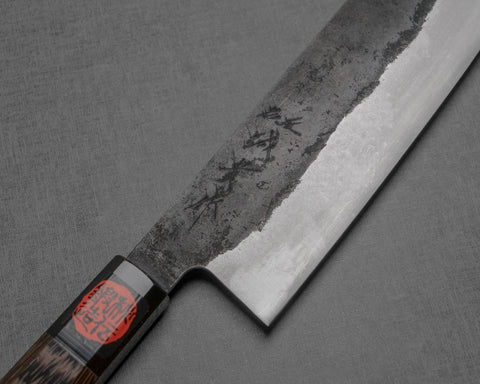
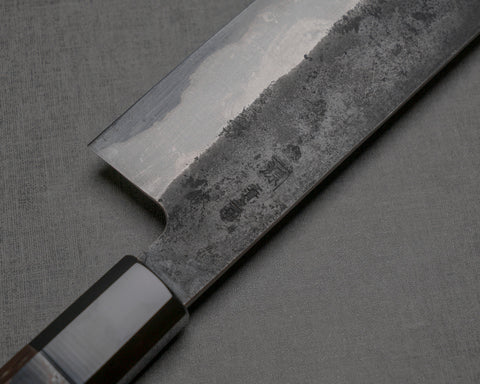
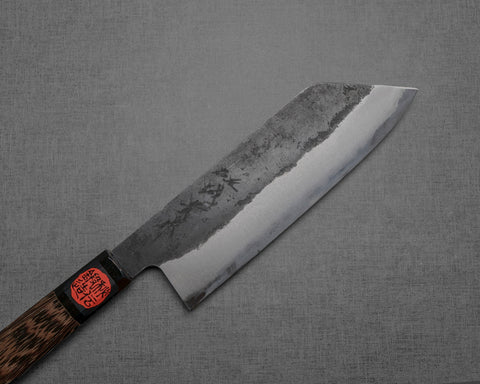
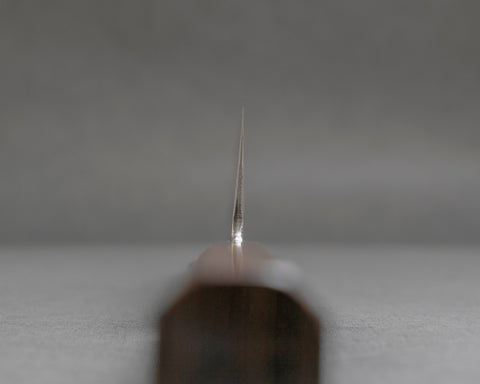
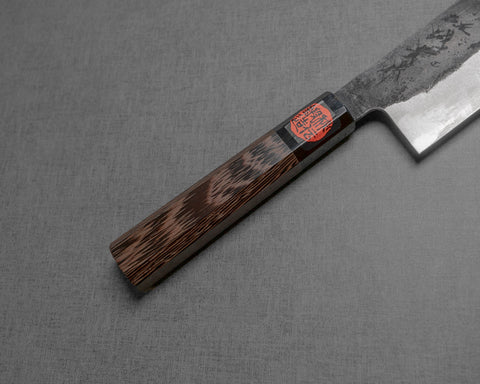
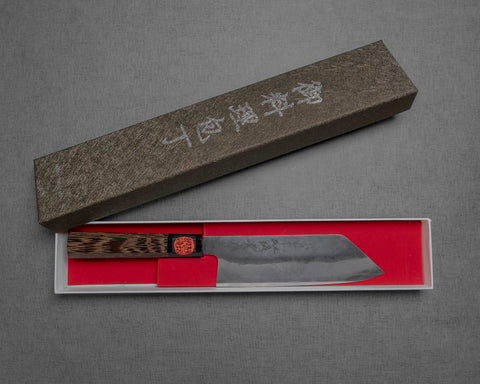
Shigeki Tanaka Aogami #2 Kurouchi 165mm Hakata
Pickup currently unavailable
This Hakata is handcrafted by Shigeki Tanaka with Aogami #2 core, clad with soft iron and heat-treated to 62-63 HRC. The blade features a Kurouchi finish and Kasumi polish on the grind. The beautiful edge geometry and distal tapering ensure an incredibly smooth cutting performance. The hardness supported by expertly heat-treated Blue #2 steel enables Tanaka to create extreme thinness behind-the-edge.
Spec:
- Origin (Made in): Miki, Hyogo Prefecture, Japan
- Brand: Tanaka Kazuyuki Hamono
- Craftsmen: Shigeki Tanaka
- Knife Type: Hakata
- Blade
- Construction: San Mai
- Grind: Double-edged Blade (50/50 Grind)
- Hagane (Core Steel): Aogami #2 (Blue #2)
- Jigane (Cladding): Soft Iron
- Hardness: 62-63 HRC
- Hand-forged, hand-ground, hand-sharpened
- Blade Finishes:
- Kurouchi
- Kasumi Polish
- Blade Length: 165mm (6.5")
- Blade Height (at heel): 48mm
- Spine Thickness
- Above heel: 3.2mm
- Middle: 2.6mm
- Handle
- Shape: Hachikaku (Octagonal)
- Material: Wenge
- Kuchiwa: Black Buffalo Horn
- Length: 129mm
- Overall Length: 306mm
- Weight: 174g (6.13oz)
- Hand chiselled mark (Front): In Japanese Kanji "Craftsman Shigeki's Work" (名匠 誠貴作)
- Engraved mark (Back): In Japanese Kanji "Minamoto Aogami#2" (源 青二号)
About Tanaka Kazuyuki Hamono 田中一之刃物
Tanaka's blade making started in the late Meiji era in 1904, by making sickles during the Russo-Japanese War. In 1946, Tanaka workshop started focusing more on kitchen knives, and in the year 2000 with the 3rd generation Kazuyuki Takana (田中 一之) on the throne, the family business changed its name to "Tanaka Kazuyuki Hamono" and has been using this name since. Kazuyuki's son - 4th generation blacksmith Shigeki Tanaka (田中 誠貴) - started making blades with his father in 1994. The father and son team, having learned traditional blade making in Fukui, started making knives with "Shigeki saku" and “Hideyuki saku” mark.
Care:
Aogami #2 (Blue #2) steel is a premium Japanese high carbon steel for knife making. Despite some corrosion resistant quality (for a carbon steel), it is not stainless, therefore you should wipe your knife dry after each use. Patina will develop over time. Rust may develop if left in prolonged contact with water or acidic food. Use a rust eraser to clean if rusts develop. Avoid cutting into bones, frozen foods, hard fruit pits.
Cutting Surface:
Recommended cutting surface: wood, rubberized boards and high-end composites, and quality plastics such as polyethene make acceptable cutting surfaces, and will help protect and prolong knife’s edge. AVOID glass, metal, countertops, and other rigid, non-forgiving surfaces.
Sharpening:
We recommend sharpening all quality Japanese knives on whetstones, as we believe they yield the best results for your knives.
Free Shipping
Free Shipping on most orders.
30 Days Return
Return unused within 30 days for a full refund, no questions asked (terms apply).
Top Japanese Makers
All knives made in Japan by top Japanese knife makers.
About
Burrfection Store sources professionally designed sharpening products, and knives from top Japanese craftsmen.
